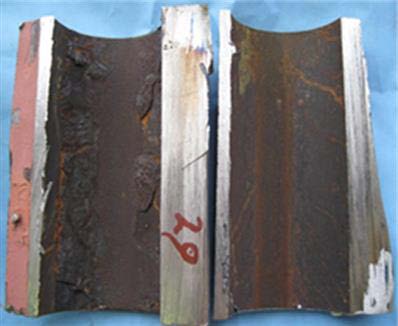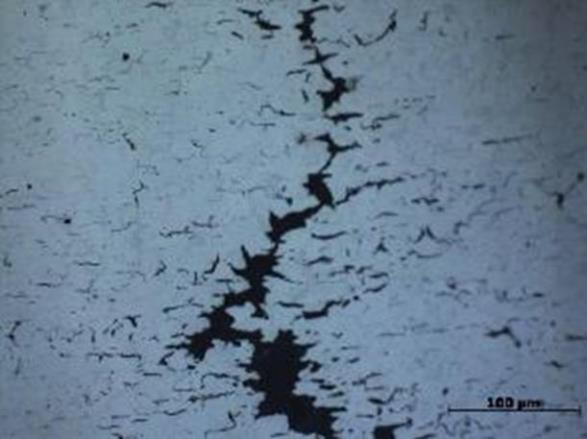Steam-power cogeneration plants provide thermal and electrical energy to drive thermal desalination processes such as multi-stage flash (MSF) distillation plants. These plants produce fresh water by flash boiling seawater in multiple stages, then collecting and condensing the steam to produce pure potable water. The boiler is a specialized water-tube boiler that keeps water tubes very hot so the feedwater is quickly heated to produce steam, which is further superheated before entering the steam turbine for power generation. The multiple stages in the MSF evaporator increase the water production capacity.
In the Kingdom of Saudi Arabia, the Saline Water Conversion Corp. (SWCC), a Saudi Government corporation, is responsible for supplying various regions in the Kingdom with desalinated water as well as electric power. It operates MSF plants to produce fresh potable water from seawater. Because of the increasing demand for fresh water, it is desirable for MSF plants to function at a high level of reliability with very limited forced shut-down periods. Despite efficient operation and maintenance practices, however, SWCC experienced steam/power cogeneration plant issues, particularly in boiler tubes, with different boiler tube failures reported within its facilities.
In CORROSION 2017 paper no. 8899, “Severe Under-Deposit Corrosion Inducing Hydrogen Embrittlement in Water Wall Tubes,” by A. Meroufel, A. Al-Sahari, M. Dewan, and M. Al-Hajri, the authors discuss two water wall tubes in a MSF plant’s operating boiler that experienced failure after 14 years of service. A failure analysis was carried out on one of the ruptured tubes, including destructive and nondestructive testing, to determine the root causes of the failure. Feedwater, drum water, and live steam qualities were evaluated based on data provided by the SWCC plant authority. The findings led the authors to conclude that the water wall tube failed because of hydrogen embrittlement (HE) induced by caustic corrosion initiated by underdeposit corrosion (UDC) attack.
In the paper, the authors define HE as the degradation of a metal’s mechanical properties that results in decreased fracture resistance and subcritical cracking in the presence of dissolved hydrogen. HE involves the ingress of hydrogen into a component, an event that can seriously reduce the ductility and load-bearing capacity of susceptible materials and cause cracking and catastrophic brittle failures at stresses below the yield stress. Hydrogen embrittlement occurs in several forms, but the common features are an applied tensile stress and dissolved hydrogen in the metal.1

The authors note that susceptibility of metallic alloys to this type of environmental cracking depends on the complex interaction between stress, material, and environmental parameters. Typically, HE is experienced in locations with high heat flux, thermal-hydraulic flow disruption, and localized overheating. The sources of the hydrogen, the paths it takes to enter the material, and the embrittlement mechanisms are extremely diverse and should be determined for each individual case. For boiler tubes, a common source of dissolved hydrogen is corrosion of the protective magnetite (Fe3O4) layer.
The failed tube in the investigation came from a MSF plant boiler commissioned in 2001. It is a heavy-fuel-oil fired boiler and uses positive pressure type water tubes with a rated capacity of 204.68 kg/s at a pressure of 8.5 MPa and steam temperature of 523 °C. The failed tube had an outer diameter of 76 mm and original wall thickness of 5.6 mm. It was in a slanted position with a ~20-degree slope, and was located close to the burner area, which is a high-heat transfer zone.
Techniques used to determine the root causes of the water wall tube failure included visual inspection, steam/water deposit analysis, microstructure analysis of selected samples, scanning electron microscopy-energy dispersive spectroscopy (SEM-EDS) analysis, and fractography of the rupture surface. The visual inspection indicated the failed tube had a thick-edged, brittle failure and a 390-mm long “window blow-out” rupture, which the authors say is typical of HE. Internal corrosion damage was reddish UDC (typical of copper mixed with hematite [Fe2O3]) associated with thick, adherent scale deposits on the tube’s hot side that followed two parallel waterlines running down the length of the pipe; and 50% wall thinning. High amounts of metallic copper—as a copper-rich outer layer—were observed on the waterside scale. Typically, copper and nickel in the feedwater are corrosion products of cupronickel-based equipment such as a high-pressure feedwater heater.
Water analysis indicated the boiler feedwater pH was controlled and stable within recommended limits; however, the boiler drum water analysis showed the pH peaked toward the high (basic) side on multiple occasions, which was thought to be caused by phosphate dosing issues.

Destructive testing determined the chemical composition of the water wall tube alloy, which was equivalent to SA 178 Grade C medium carbon steel.
Other observations made while analyzing the failed tube included the slight reduction of carbon content (decarburization) at the corroded area, which can be associated with the large amount of deposits acting as a heat transfer barrier. This would increase the temperature of the tube metal and induce localized decarburization. The presence of microfissures, intergranular cracks, and microvoids in some areas clearly indicated involvement of HE. The absence of significant decarburization suggested the voids and crack initiation were caused by a recombination of hydrogen atoms to form hydrogen gas molecules.
Based on the findings, the authors concluded that the water wall tube failed by HE brought on by caustic corrosion, which occurred when a concentration of basic salts (caustic) developed beneath deposits along the waterlines and attacked the tube’s protective Fe3O4 layer. Waterline formation was likely due to either a low flow rate inside the tubes or a high blowdown rate, where an excessive amount of water was removed from the boiler to control water parameters. The concentration of sodium and other salts produced a localized high-pH environment that, when combined with oxidants (oxygen and copper) and high heat flux, created conditions for severe UDC attack on the Fe3O4 layer.
According to Meroufel, a NACE International member with Desalination Technologies Research Institute (Jubail, Saudi Arabia), copper is known to have a positive electrochemical potential compared to Fe3O4 and iron. The combination of Fe3O4, copper, and the concentrated caustic solution beneath the deposits created a galvanic cell where the Fe3O4 and iron acted as the anodes and were oxidized, while the copper was the site for the cathodic reaction. The copper accelerated the caustic corrosion.
In addition to causing localized thinning of the tube wall, the UDC produced enough atomic hydrogen to be absorbed inside the tube metal. Since significant decarburization was not observed by metallography, the authors concluded the absorbed atomic hydrogen recombined into hydrogen gas along the grain boundaries and caused the formation and nucleation of the microfissures and cracks that were observed by metallography and confirmed by fractography. The substantial wall thickness loss caused by the localized UDC left the tube unable to withstand the stress of internal high pressure. Thus, the tube failed by rupture in a window configuration typical of the HE mechanism.
Although the authors note the cause of the tube failure was corrosion from waterside deposits that affected the protective Fe3O4 layer on the tube’s internal surface, they determined the root causes of the failure were improper carryover control, where a less restrictive feedwater treatment allowed the transport of additives and chemical treatment byproducts as well as corrosion products into the boiler, and waterline creation caused by low water levels or excessive blowdown rates. The authors made several recommendations, which included: avoiding boiler operation at excessive low water levels or excessive blowdown rates, which leads to waterlines in slanted tubes; determining and eliminating the copper nickel alloy corrosion source; decreasing the O2 level in feedwater from 20 ppb to <10 ppb; and using the sodium/phosphorus ratio in the feedwater as an indicator of caustic corrosion risk.
Contact Abdelkader Meroufel, Desalination Technologies Research Institute—email: nabil_wahran@hotmail.fr.
Reference
1 “Hydrogen Embrittlement,” NACE International, https://www.nace.org/Corrosion-Central/Corrosion-101/Hydrogen-Embrittlement (May 9, 2017).